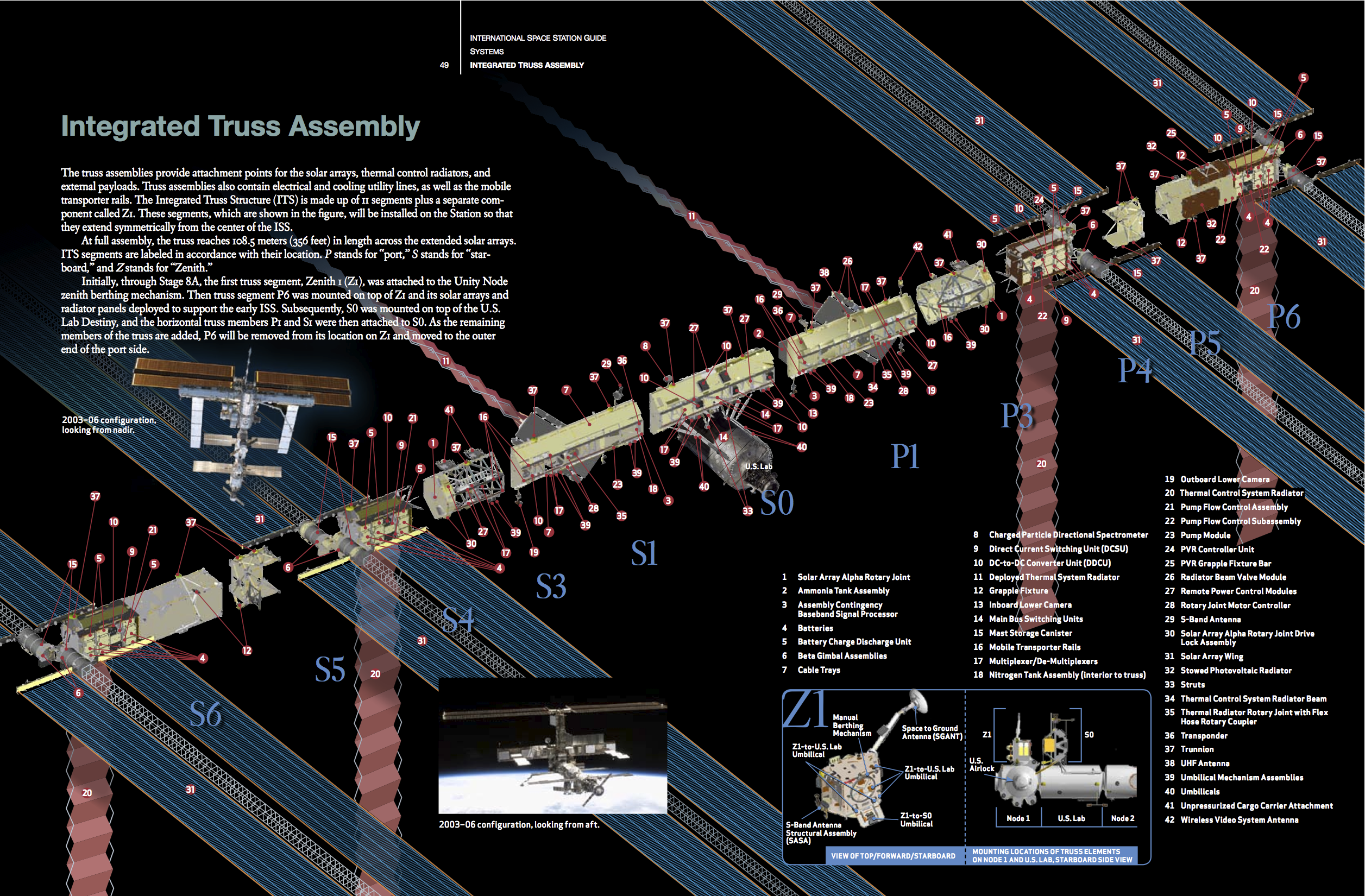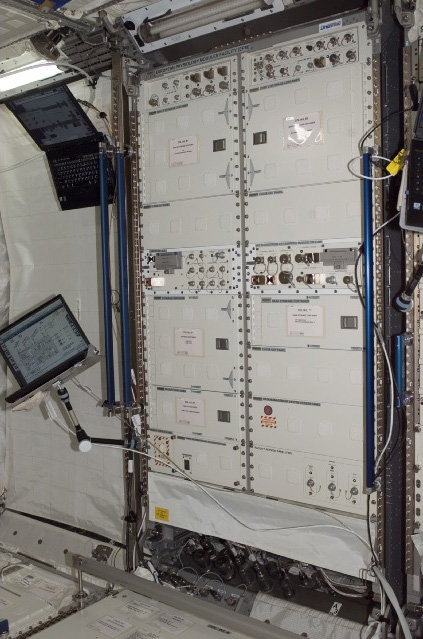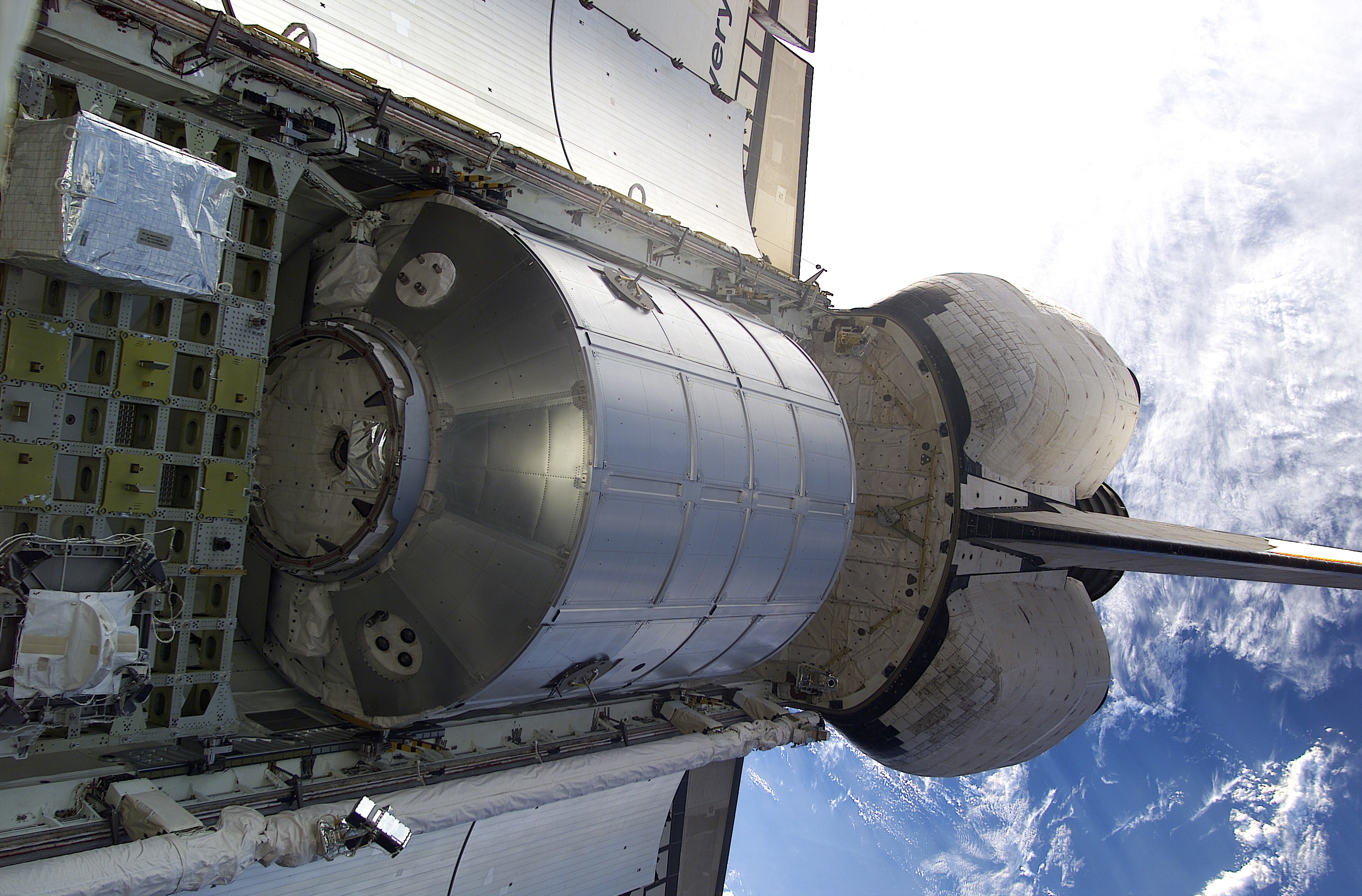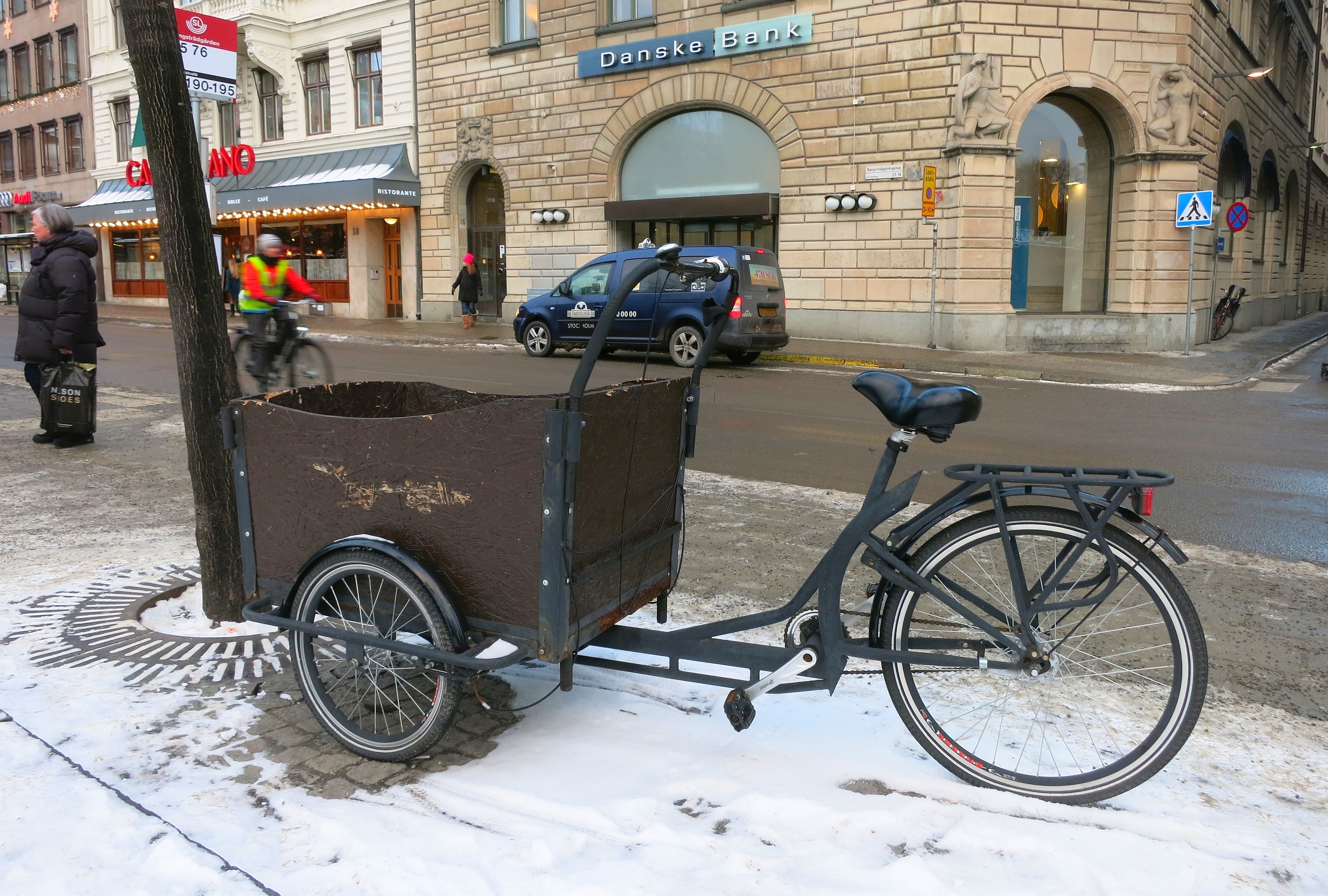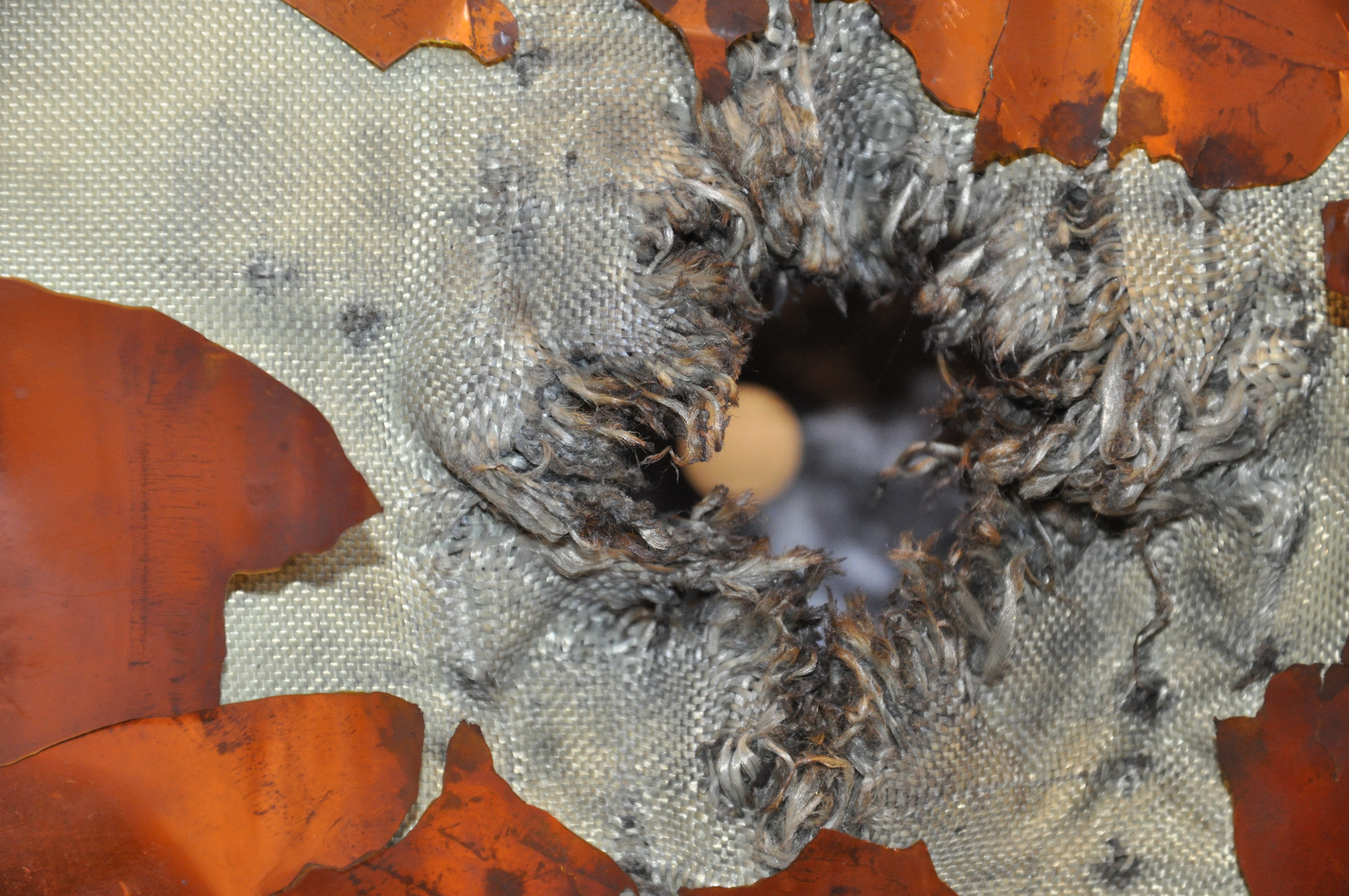|
European Transportation Carrier (ISS Facility)
The European Transportation Carrier (ETC) transports various payload items, such as commissioning items, science instruments, consumables, orbital support equipment, orbital replacement units, and resupply items, and science items, such as containers. This applies especially to European payload items that cannot be launched in their payload's rack due to limited stowage and transportation capabilities. On orbit, the ETC serves as a workbench and stowage facility, supporting the Biolab, Fluid Science Laboratory (FSL), European Physiology Module (EPM), and European Drawer Rack (EDR). Since its first use in the Columbus laboratory, the ETC has been used as a transport rack within the multi-purpose logistics module (MPLM). It allows for regular supply and return of all experiment and service items needed for continuous operation of the European payload facilities inside the Columbus module. The ETC can carry up to 410 kg (881 lb) of payload and experiment items, accomm ... [...More Info...] [...Related Items...] OR: [Wikipedia] [Google] [Baidu] |
European Transportion Carrier With Stowage Bags
European, or Europeans, or Europeneans, may refer to: In general * ''European'', an adjective referring to something of, from, or related to Europe ** Ethnic groups in Europe ** Demographics of Europe ** European cuisine, the cuisines of Europe and other Western countries * ''European'', an adjective referring to something of, from, or related to the European Union ** Citizenship of the European Union ** Demographics of the European Union In publishing * ''The European'' (1953 magazine), a far-right cultural and political magazine published 1953–1959 * ''The European'' (newspaper), a British weekly newspaper published 1990–1998 * ''The European'' (2009 magazine), a German magazine first published in September 2009 *''The European Magazine'', a magazine published in London 1782–1826 *''The New European'', a British weekly pop-up newspaper first published in July 2016 Other uses * * Europeans (band), a British post-punk group, from Bristol See also * * * Europe (disambi ... [...More Info...] [...Related Items...] OR: [Wikipedia] [Google] [Baidu] |
Orbital Replacement Unit
Orbital replacement units (or on-orbit replaceable unit) (ORUs) are key elements of the International Space Station that can be readily replaced when the unit either passes its design life or fails. ORUs are parts of the main systems and subsystems of the external elements of the ISS, none are intended to be installed inside the pressurised modules. Examples of ORUs are: pumps, storage tanks, controller boxes, antennas, and battery units. Such units are replaced either by astronauts during EVA or by the Dextre (SPDM) robotic arm. All are stored on the three external stowage platforms (ESPs) or the four ExPRESS Logistics Carriers (ELCs) mounted on the Integrated Truss Structure (ITS). Introduction While spare parts/ORUs were routinely brought up and down during the ISS life-time via Space Shuttle resupply missions, there was a heavy emphasis once the Station was considered complete. Several Shuttle missions were dedicated to the delivery of ORUs using support carrier structures ... [...More Info...] [...Related Items...] OR: [Wikipedia] [Google] [Baidu] |
Biolab (ISS Facility)
Biolab (Biological Experiment Laboratory) is a single-rack multi-user science payload designed for use in the ''Columbus'' laboratory of the International Space Station. Biolab support biological research on small plants, small invertebrates, microorganisms, animal cells, and tissue cultures. It includes an incubator equipped with centrifuges in which the preceding experimental subjects can be subjected to controlled levels of accelerations. These experiments help to identify "the role that microgravity plays at all levels of an organism, from the effects on a single cell up to a complex organism including humans." Description Summary : *BioLab provides an on-orbit biology laboratory that enables scientists to study the effects of microgravity and space radiation on unicellular and multicellular organisms, including bacteria, insects, protists (simple eukaryotic organisms), seeds, and cells. *The BioLab facility includes an incubator, microscope, spectrophotometer (instrument used ... [...More Info...] [...Related Items...] OR: [Wikipedia] [Google] [Baidu] |
FSL (ISS Facility)
The Fluid Science Laboratory is a European (ESA's) science payload designed for use in Columbus built by Alenia Spazio, OHB-System and Verhaert Design and Development. It is a multi-user facility for conducting fluid physics research in microgravity conditions. It can be operated in fully or in semi-automatic mode and can be controlled on board by the ISS astronauts, or from the ground in the so-called telescience mode. The major objective of performing fluid science experiments in space is to study dynamic phenomena in the absence of gravitational forces. Under microgravity such forces are almost entirely eliminated thereby significantly reducing gravity-driven convection, sedimentation and stratification and fluid static pressure, allowing the study of fluid dynamic effects normally masked by gravity. These effects include diffusion-controlled heat and mass transfer. The absence of gravity-driven convection eliminates the negative effects of density gradients (inhomogeneous ... [...More Info...] [...Related Items...] OR: [Wikipedia] [Google] [Baidu] |
EPM (ISS Facility)
The European Physiology Module (EPM) is an International Standard Payload Rack for the Columbus Laboratory on board the International Space Station. The EPM rack was built by OHB-System in Bremen. The EPM enables a better understanding of the effects of spaceflight on the human body. Research typically includes neuroscientific, cardiovascular, and physiological studies and investigations of metabolic processes. The EPM performs physiological and biomedical tests and transmits the data to Earth for further analysis. The resulting data will provide insight into the human body's processes in a microgravity environment. The EPM provides equipment for the study of the human body, including three science modules: two active modules, CARDIOLAB and MEEMM, and one module (sample collection kit, or SCK) that includes equipment to enable collection of biological samples (blood, urine, and saliva). European Physiology Module (EPM) - NASA Description The facility will consist of separate mo ... [...More Info...] [...Related Items...] OR: [Wikipedia] [Google] [Baidu] |
European Drawer Rack (EDR)
The European Drawer Rack (EDR) is a single, six-post International Standard Payload Rack (ISPR) with seven Experiment Modules (EMs), each of which has separate access to power and cooling. A video management unit sends streaming video, images, and science data to Earth via the Columbus module's high-rate data link and can temporarily store 72 GB of video. The experiments are largely autonomous to minimize data transfer requirements, though the EDR can be operated remotely via telescience or in real time by the crew via a dedicated laptop. The EDR has two different types of EMs: the standard International Space Station locker and the standard eight panel unit International Subrack Interface Standard (ISIS) drawer. Overview EDR is a multi-user facility on board the International Space Station that accommodates a variety of science experiments. It is located in the Columbus Laboratory module and was developed for the European Space Agency by Alenia Spazio, a subsidiary of Thale ... [...More Info...] [...Related Items...] OR: [Wikipedia] [Google] [Baidu] |
Multi-Purpose Logistics Module
A Multi-Purpose Logistics Module (MPLM) is a large pressurized container that was used on Space Shuttle missions to transfer cargo to and from the International Space Station (ISS). Two MPLMs made a dozen trips in the Shuttle cargo bay and initially berthed to the '' Unity'' module and later the ''Harmony'' module on the ISS. From there, supplies were offloaded, and finished experiments and waste were reloaded. The MPLM was then reberthed in the Shuttle for return to Earth. Three modules were built by the Italian Space Agency (ASI): ''Leonardo'', ''Raffaello'', and ''Donatello''. The ''Leonardo'' module was modified in 2010 to turn it into the Permanent Multipurpose Module (PMM) and was permanently attached to the ISS during the STS-133 mission in March 2011. In July 2011, the ''Raffaello'' module was the primary payload on the final Space Shuttle mission. It returned with the Shuttle and was stored at the Kennedy Space Center. The ''Donatello'' module never launched. ... [...More Info...] [...Related Items...] OR: [Wikipedia] [Google] [Baidu] |
Cargo Transfer Bag
Cargo consists of bulk goods conveyed by water, air, or land. In economics, freight is cargo that is transported at a freight rate for commercial gain. ''Cargo'' was originally a shipload but now covers all types of freight, including transport by rail, van, truck, or intermodal container. The term cargo is also used in case of goods in the cold-chain, because the perishable inventory is always in transit towards a final end-use, even when it is held in cold storage or other similar climate-controlled facility. The term freight is commonly used to describe the movements of flows of goods being transported by any mode of transportation. Multi-modal container units, designed as reusable carriers to facilitate unit load handling of the goods contained, are also referred to as cargo, especially by shipping lines and logistics operators. Similarly, aircraft ULD boxes are also documented as cargo, with an associated packing list of the items contained within. When empty containe ... [...More Info...] [...Related Items...] OR: [Wikipedia] [Google] [Baidu] |
Automated Transfer Vehicle
The Automated Transfer Vehicle, originally Ariane Transfer Vehicle or ATV, was an expendable automated cargo spacecraft, cargo spacecraft developed by the European Space Agency (ESA), used for space cargo transport in 2008–2015. The ATV design was launched to orbit five times, exclusively by the Ariane 5 heavy-lift launch vehicle. It effectively was a larger European counterpart to the Russian Progress (spacecraft), Progress cargo spacecraft for carrying upmass to a single destination—the International Space Station (ISS)—but with three times the capacity. The five ATVs were named after important European figures in science and engineering: ''Jules Verne ATV, Jules Verne'', ''Johannes Kepler ATV, Johannes Kepler'', ''Edoardo Amaldi ATV, Edoardo Amaldi'', ''Albert Einstein ATV, Albert Einstein'', and ''Georges Lemaître ATV, Georges Lemaître''. Following several delays to the program, the first of these was launched in March 2008. These ATVs performed supply missions to t ... [...More Info...] [...Related Items...] OR: [Wikipedia] [Google] [Baidu] |
Destiny (ISS Module)
The ''Destiny'' module, also known as the U.S. Lab, is the primary operating facility for U.S. research payloads aboard the International Space Station (ISS). It was berthed to the '' Unity'' module and activated over a period of five days in February, 2001. ''Destiny'' is NASA's first permanent operating orbital research station since Skylab was vacated in February 1974. The Boeing Company began construction of the research laboratory in 1995 at the Michoud Assembly Facility and then the Marshall Space Flight Center in Huntsville, Alabama. ''Destiny'' was shipped to the Kennedy Space Center in Florida in 1998, and was turned over to NASA for pre-launch preparations in August 2000. It launched on February 7, 2001 aboard the on STS-98. Astronauts work inside the pressurized facility to conduct research in numerous scientific fields. Scientists throughout the world would use the results to enhance their studies in medicine, engineering, biotechnology, physics, materials sc ... [...More Info...] [...Related Items...] OR: [Wikipedia] [Google] [Baidu] |
Japanese Experiment Module
Japanese may refer to: * Something from or related to Japan, an island country in East Asia * Japanese language, spoken mainly in Japan * Japanese people, the ethnic group that identifies with Japan through ancestry or culture ** Japanese diaspora, Japanese emigrants and their descendants around the world * Japanese citizens, nationals of Japan under Japanese nationality law ** Foreign-born Japanese, naturalized citizens of Japan * Japanese writing system, consisting of kanji and kana * Japanese cuisine, the food and food culture of Japan See also * List of Japanese people * * Japonica (other) * Japonicum * Japonicus This list of Latin and Greek words commonly used in systematic names is intended to help those unfamiliar with classical languages to understand and remember the scientific names of organisms. The binomial nomenclature used for animals and plants i ... * Japanese studies {{disambiguation Language and nationality disambiguation pages ... [...More Info...] [...Related Items...] OR: [Wikipedia] [Google] [Baidu] |
Columbus (ISS Module)
''Columbus'' is a science laboratory that is part of the International Space Station (ISS) and is the largest single contribution to the ISS made by the European Space Agency (ESA). Like the ''Harmony'' and '' Tranquility'' modules, the ''Columbus'' laboratory was constructed in Turin, Italy by Thales Alenia Space. The functional equipment and software of the lab was designed by EADS in Bremen, Germany. It was also integrated in Bremen before being flown to the Kennedy Space Center (KSC) in Florida in an Airbus Beluga. It was launched aboard on February 7, 2008, on flight STS-122. It is designed for ten years of operation. The module is controlled by the Columbus Control Centre, located at the German Space Operations Center, part of the German Aerospace Center in Oberpfaffenhofen near Munich, Germany. The European Space Agency has spent €1.4 billion (about US$2 billion) on building ''Columbus'', including the experiments it carries and the ground control inf ... [...More Info...] [...Related Items...] OR: [Wikipedia] [Google] [Baidu] |
